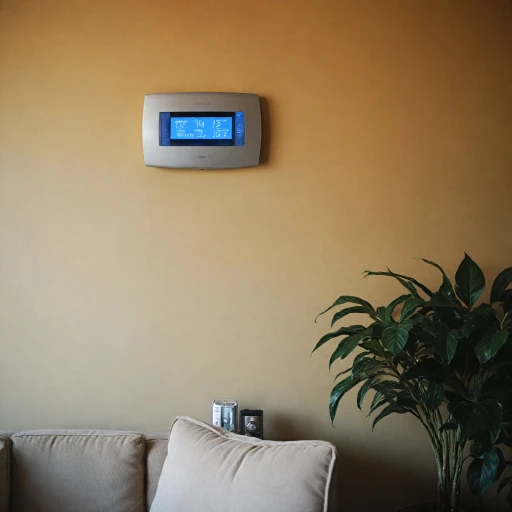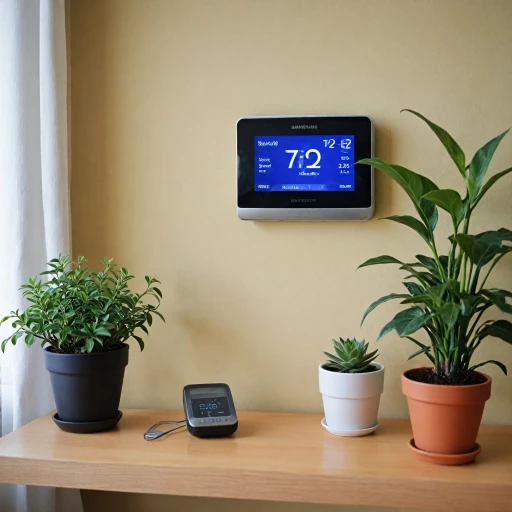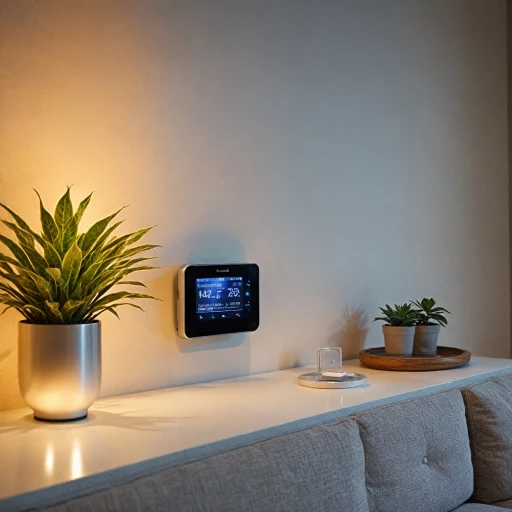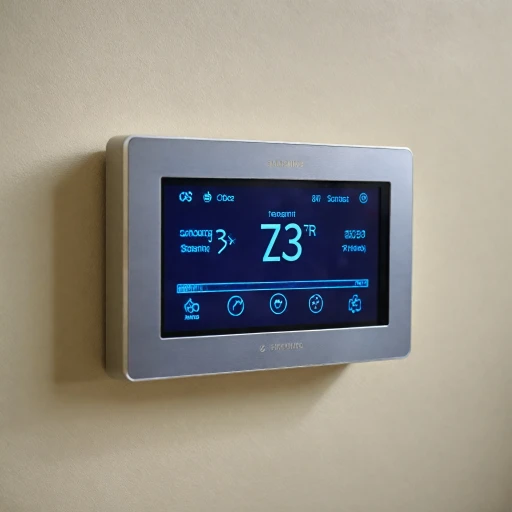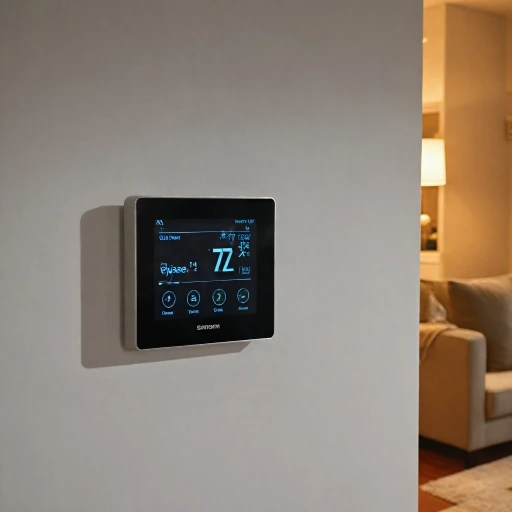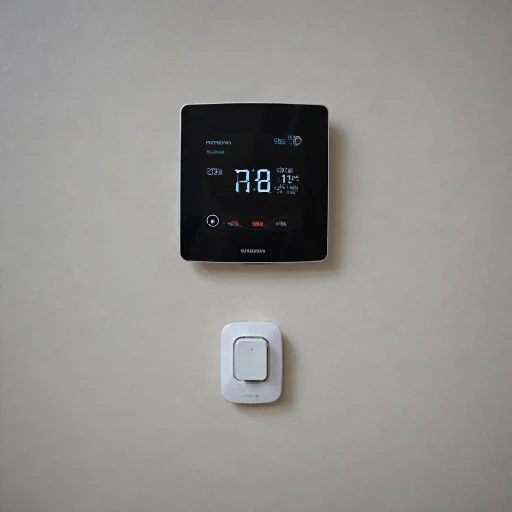
What is Nest Airwave?
Unveiling the Nest Airwave Technology
Nest Airwave represents a cutting-edge advancement in smart thermostat technology, engineered to transform how homeowners manage their home temperature systems. Developed with the aim of boosting energy efficiency, this feature is an integral part of the widely recognized Nest thermostat lineup. At its core, the airwave technology capitalizes on an interesting fact about air conditioning systems: as your compressor turns off, the fan can still continue to cool the environment by pushing through residual cool air. Nest Airwave harnesses this by turning off the air conditioning compressor before reaching the set target temperature, yet keeps the fan running. This smart synchronization helps maintain desired cooling with less energy use. Not only does the airwave feature contribute to energy savings, but it also works seamlessly with the overall system to improve home comfort levels, a point that is further examined in other sections of this blog. For those integrating the Nest Learning thermostat into their homes, the Nest Airwave becomes an essential function for optimizing energy use. By understanding how these features operate, users can effectively adjust their eco temperatures and experience the seamless transition between heating and cooling. To gain a deeper insight into the benefits of similar technologies in other models, like the Honeywell Chronotherm III, visit our in-depth exploration. This will provide a broader perspective on how the Nest Airwave compares with other smart thermostat features on the market.How Nest Airwave Enhances Energy Efficiency
Maximizing Energy Efficiency with Airwave
The Nest Airwave technology is a standout feature that makes the thermostat a true "smart" device when it comes to managing your home's energy consumption. Its main goal is to help save energy by optimizing the cooling process, which is crucial for reducing energy costs and extending the lifespan of your air conditioning system. One of the primary ways the Airwave feature enhances energy efficiency is by minimizing the dependency on the compressor—a major energy-consuming component in traditional cooling systems. When the Nest detects that the humidity level is low and the target temperature is close to being achieved, it turns off the compressor but keeps the fan running. This method, known as 'fan-only operation,' makes use of the residual cool air within the system to continue filling your rooms with cool air without spending more energy than necessary. This technique helps strike a balance between comfort and efficiency, allowing you to adjust the thermostat settings without worrying about excessive energy use. It reduces the cool stroke of the air conditioning cycle, so even during intense seasons, you can maintain eco temperatures and experience comfort without any compromise. Further, when paired with Google Nest’s learning thermostat capabilities, the Airwave feature intelligently adapts to your schedule and seasonality. This smart adjustment ensures your thermostat gen uses what it learns to minimize energy use at times when it's least impactful, such as during 'rush hour' periods of thermostat usage in the home. For anyone interested in understanding how different thermostat technologies can save energy, a closer look at Mitsubishi Electric thermostats can offer a comprehensive analysis of effectiveness. Technological advancements such as the Nest Airwave are paving the way for more intuitive interactions with our home systems, promoting smarter energy consumption and cost savings.Comparing Nest Airwave with Traditional Thermostat Functions
Innovative Features of Airwave Compared to Regular Thermostats
In the evolving world of smart home technology, the innovative features of Nest Airwave stand out, especially when compared to traditional thermostat functions. Let's delve into how this technology differentiates itself: Nest Airwave technology intelligently manages the air conditioning system in your home. Instead of simply turning off the compressor when the target temperature is achieved, Airwave keeps the fan running. This ensures that the remaining cool air in the ducts is used efficiently to maintain a comfortable environment, even after the compressor is off. By doing so, Nest is designed to help save energy effectively, offering a smarter cooling system. This energy-efficient function is quite different from the operations of traditional thermostats. Conventional counterparts do not optimize the use of cool air post-cooling cycle, often leading to energy wastage. The Nest learning algorithm learns your home's patterns and intelligently adjusts to maximize comfort while minimizing energy consumption. The Nest Learning Thermostat, with its sophisticated Airwave feature, stands as a revolutionary step toward a more sustainable and cost-efficient way of cooling homes. The integration of this feature can be especially beneficial during rush hour peak energy periods when the demand for electricity spikes. In contrast, traditional thermostats lack the capability of understanding and adapting to the ambient home temperature shifts seasonally. Using the Nest App, users can easily monitor and adjust settings ensuring eco temperatures without the need for constant manual intervention, enhancing the user experience significantly. To know more about how such technologies help achieve these efficiencies, examining resources such as the Honeywell Alarm System Manual could provide additional insights. Overall, Nest Airwave sets a benchmark, demonstrating how smart thermostats harness technology to deliver smarter energy solutions, ultimately refining the concept of home comfort and efficiency.The Impact of Nest Airwave on Home Comfort
Enhancing Comfort with Intelligent Air Conditioning
For those looking to optimize home comfort, the Nest Airwave technology offers an innovative approach to air conditioning management. Utilizing the airwave feature, it intelligently leverages the residual cool air remaining in the system after the compressor has been turned off. This smart thermostat feature leverages the fan to circulate this stored cool air, thus efficiently maintaining the target temperature without further energy consumption.
Airwave technology not only ensures a comfortable indoor climate by sustaining the cool air effect but also enhances comfort through its smart thermostat capabilities. By learning the user’s schedule and preferences, it supports seasonal savings while still effectively handling heating and cooling requirements.
Moreover, the system's ability to adjust eco temperatures during rush hour prevents energy spikes, which can otherwise lead to discomfort. The integration of the airwave feature allows users to smoothly transition between energy-saving modes and their desired comfort levels without compromising on the effectiveness of the air conditioning system.
Overall, Nest Airwave enriches the home cooling experience by improving air conditioning efficiency while minimizing energy usage, resulting in sustained comfort and significant cost savings.
User Experiences with Nest Airwave
User Insights and Real-World Experiences
Exploring user experiences with Nest Airwave technology sheds light on its real-world application and effectiveness. Many users have reported significant energy savings, a primary advantage driving adoption. By optimizing the compressor and fan settings, the Airwave feature allows the system to maintain the target temperature with minimal energy use. Feedback from users highlights a few key areas:- Enhanced Comfort: Users appreciate the ability of the Nest thermostat to keep homes comfortable. The technology intelligently uses residual cool air in the system, which helps achieve optimal temperature without constant compressor operation.
- Ease of Use: Through the Nest app, the learning thermostat adapts over time to users' preferences. This smart feature turns the experience into a hands-free adjustment, allowing the thermostat to set conditions for both heating and cooling effectively.
- Seasonal Adaptability: The thermostat's capability to adapt to seasonal changes—aided by features like eco temperatures and the airwave—ensures efficiency is maintained throughout the year.
Future Developments in Smart Thermostat Technology
Innovations on the Horizon for Smart Thermostats
The rapid evolution of smart thermostat technology shows no signs of slowing down. The Nest Airwave feature exemplifies how innovation can optimize energy efficiency and enhance user comfort, but it's worth considering what future advancements may hold.- Integration with AI and Machine Learning: As AI continues to evolve, smarter algorithms will likely make the Nest Learning Thermostat even more adept at adapting to users’ habits and predicting their needs. This could mean smarter adjustments to heating and cooling patterns, further reducing energy consumption while maintaining home comfort.
- Enhanced Connectivity: Future smart thermostats may offer improved integration with other smart home devices, creating a more cohesive and synchronized system. This can help to further streamline energy management, as the thermostat could interact with other devices to optimize resource usage.
- Advanced Sensing Capabilities: Enhanced sensory technology is another area poised for growth. The development of sensors that better detect occupancy, humidity, or even air quality might help smart thermostats like the Nest adjust settings more precisely.
- Greater Customization and User Control: Personalization will likely advance as smart thermostats evolve. More options for users to set target temperatures or customize eco temperatures during different "rush hour" periods could lead to significant energy savings.
- Environmental Impact Reduction: With climate change concerns, increasing efforts to make thermostats more environmentally friendly is anticipated. This could include better materials, more efficient compressor usage, and broader adoption of features like the Airwave to minimize energy waste.

